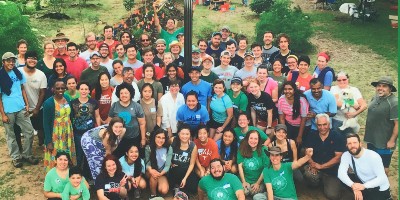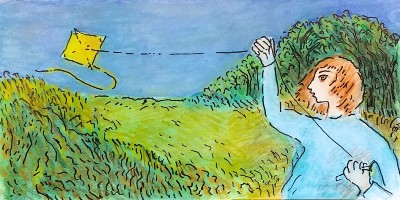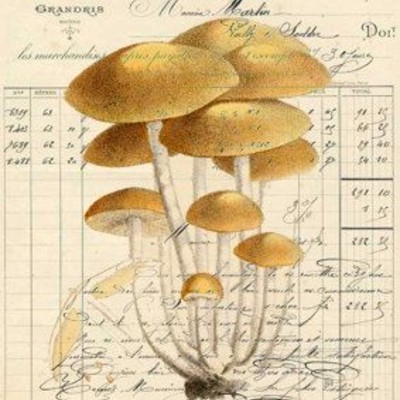 bringing nature, nurseries and gardeners together Aug. 6 2021
|
|
Nursery news: the Natural Gardener is set to re-start its Saturday morning classes next month. Sept 7: English style Cottage Gardening in Texas; Sept. 14: Butterfly Gardens; Sept. 21: Organic Gardening 101; Sept. 28 Herb Gardening. Class size is limited, and gardeners must sign up on the Thursday prior to the date of the talk to attend. TNG. /
'Summer Sizzle Sale' at Garden Seventeen next weekend: 10% off everything; 25% off trees and shrubs; 50% off select items. Aug. 14 - 15. Garden Seventeen ❦
_________________________________________________
The art of deadheading: Every summer there’s a peak season, when all the flowers in my garden decide to bloom in concert, writes Michelle Slatalla. "This grand collusion lasts for…a day? Maybe two. The rest of the year I spend coaxing everybody into re-blooming. The best encouragement: deadheading." Gardenista ❦

Austin Organic Gardeners: at their on-line meeting on Monday (Aug 9) at 6 p.m. the Festival Beach Food Forest Team talk about their magnificent creation (near I-35 and Lady Bird Lake). Food Forest ❦
_________________________________________________
Mushroom traditions in Mexico: the Central Texas Mycological Society presents an on-line talk by Johann Mathieu (Micologica 360°) about the culture of mushroom foraging in Mexico. August 19 at 7 p.m. Hongosto (see below for article on the Central Mycological Society.) ❦
_________________________________________________
Support the Austin Garden! This newsletter relies on donations from readers. Please consider making a donation today. Many thanks ; - ) PayPal ❦

Central Texas Gardener: in the studio Casey Aicklen (Barton Springs Nursery) helps viewers choose 'summer standouts for splashy color,' including volcano bush, the shade-loving black and blue sage, and pentas. On tour, Robert Jennings re-created a Hawaiian honeymoon paradise for his wife in their backyard. KLRU ❦

Hancock golf course-to-park: there's no kite-flying or picnicking upon the great lawns of this central golf course right now. But there could be. . . and there should be. Please join us to help heal the land and open up what will someday be a crown jewel in Austin's park system. (painting: Linda Anderson) Hancock Conservancy ❦
 Austin's Mycology Movement
by Darrel Mayers
'Mushroom block giveaway.' This was the message that came into my mailbox recently - an invitation from the Central Texas Mycological Society to pick up a block of mycelium in front of a nearby Austin home.
It turned out to be this intriguing plastic bag containing a brick of white matter with a variety of insects running around inside it.
I dutifully followed instructions, spritzing the hole in the bag with rainwater several times a day. And behold, glory of glories. . . from it emerged the most beautiful array of oyster mushrooms that you could possibly imagine - like a mass of old golden phonograph speakers stacked artfully on top of each other.
And when cooked up in garlic and butter a few days later, it made a very flavorsome lunch.
I decided to check in with Angel Schatz of the Central Texas Mycological Society, to learn more about this new culinary/horticulural delight.
Can you give readers a brief history of the Central Texas Mycological Society? It was formed in 2019. Like most mycological organizations we are primarily focused on in-person community education and conservation. We were just getting started. We have made the most out of “these uncertain times" by moving our education online with monthly online events.
Early this year we began a Mycology in the Garden video series and Mushroom Block Giveaway that is going strong and has become a great fundraiser. We are starting to do more in-person activities but we want our education to remain partially on-line and available on our YouTube Channel.
How did you enter the world of mycology? I was fortunate to have grandparents that lived on a farm in Missouri surrounded by rolling hills, creeks, and forest. Every spring my granddad and siblings would go hunting for morel mushrooms after April showers. I was lucky to be exposed to mushrooms at a young age and learned they were not harmful to touch.
As I became an adult and having moved to Texas, I forgot about these experiences, until I learned morels grow in Central Texas. I found my first Texas morels last year just as the pandemic shut everything down. SXSW was canceled and in my newfound free-time I wandered near creeks looking under juniper trees for the honeycombed, yellow mushrooms.
What is a good first step for a central Texas gardener who wants to try their hand at growing their own mushrooms. Is it to get one of those blocks of mycelium that your society is so generously sharing? Yes, signing up for our Recycle Mushroom Block Giveaway at CentralTexasMycology.org and watching the video series is a good first step. If you aren’t in Central Texas, you can find mushroom grow blocks from most mushroom farms. You can find a list of Texas Mushroom Companies on our website.
I was so impressed by the video series on your website. You show us how to grow fungi on wood chips, straw bales, and logs . . . but you said the most popular way to grow them here is by trench composting. Can you explain? This method is taking advantage of the fully myceliated oyster mushroom blocks that have only been fruited once at the farm. Once they are buried in the ground with additional substrate and watered as shown in the video, they will fruit several times more. After that the mycelium will continue to compost and feed the soil web.
Folks tend to approach fungi with a sense of trepidation - because of the thought that if you eat the wrong one, you might perish! So they’re kind of beautiful, but some have the potential to be deadly - and they can also wipe out a community’s harvest. It would seem like education is a key to fully understanding the huge potential of fungi, and that people maybe aren’t getting that in schools and communities. Would you agree? Education is key and since we live in a mycophobic society largely driven by the war on nature, the fungi kingdom has largely been ignored.
Only 1 to 2 percent of mushrooms are poisonous, only about a dozen are fatal. There is only one that is found in Central Texas that is fatal: the Eastern Destroying Angel or Amanita bisporigera. I have spotted it in East Texas and Bastrop in pines.
There are several toxic mushrooms that will make you feel ill in Central Texas, but there is only one that is fatal. I don’t advise this but you can actually taste poisonous mushrooms and spit out and as long as you don’t digest the mushroom you are fine. This is what some mycologists do to help identify mushrooms.
There have been huge steps recently in the use of entheogenic (magic) mushrooms in the treatment of addiction and depression. That’s a big step, for mushrooms to move from things culinary, into the world of mental health. Are you surprised? I’m not surprised that in Texas research with enthogenic mushrooms and plants was approved by our legislators. Just like the marajuana industry there are a lot of millionaires and billionaires throwing money at research. It’s a temporary fix to larger problems. ❦
For more info, watch this informative interview on Central Texas Gardener
|
 It's About Thyme Legacy Publications.
Contact newsletter editor Darrel Mayers with any ideas for articles or interesting links at internationalrain@yahoo.com (hitting 'reply' to this email won't work) |
|
|